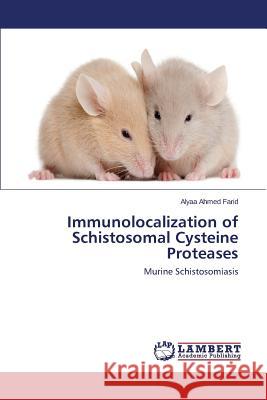Immunolocalization of Schistosomal Cysteine Proteases » książka
Immunolocalization of Schistosomal Cysteine Proteases
ISBN-13: 9783659572999 / Angielski / Miękka / 2014 / 252 str.
During penetration into the skin, Schistosoma spp. continuously excrete/secrete substances (E/S) into their surroundings in order to aid their passage and/or as part of their metabolism. These E/S products are known to contain different types of proteins and lipids, many of whose function are not fully known. By culturing adult worm in vitro, E/S products have been collected, purified and analyzed for their functional capabilities. One of the major components of the E/S products is cysteine proteases. Proteases have been under scrutiny as targets of immunological or chemotherapeutic anti-Schistosoma agents because of their vital role in many stages of the parasitic life cycle. In addition, proteases are known to act as important regulatory elements in a variety of species. Therefore, immunolocalization techniques could be utilized to determine the presence of E/S in different stages of the parasite's development and within the different organs of naturally infected mice. E/S Ags investigated appears to be membrane bound and can be expected to be released from the S. mansoni surface and gut to the host's blood. The detection and localization of E/S Ags would help in early diagnosis.
During penetration into the skin, Schistosoma spp. continuously excrete/secrete substances (E/S) into their surroundings in order to aid their passage and/or as part of their metabolism. These E/S products are known to contain different types of proteins and lipids, many of whose function are not fully known. By culturing adult worm in vitro, E/S products have been collected, purified and analyzed for their functional capabilities. One of the major components of the E/S products is cysteine proteases. Proteases have been under scrutiny as targets of immunological or chemotherapeutic anti-Schistosoma agents because of their vital role in many stages of the parasitic life cycle. In addition, proteases are known to act as important regulatory elements in a variety of species. Therefore, immunolocalization techniques could be utilized to determine the presence of E/S in different stages of the parasites development and within the different organs of naturally infected mice. E/S Ags investigated appears to be membrane bound and can be expected to be released from the S. mansoni surface and gut to the hosts blood. The detection and localization of E/S Ags would help in early diagnosis.











